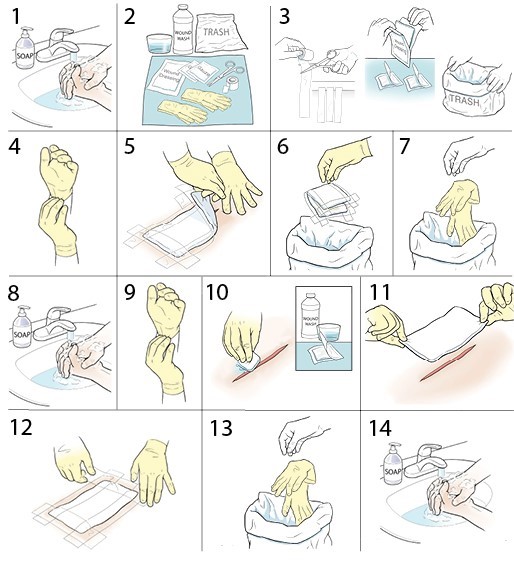A nurse is assisting with staff education about hand hygiene.
Which of the following instructions should the nurse include in the teaching?
Wear sterile gloves when in contact with body fluids.
Use alcohol-based cleanser when hands are visibly soiled.
Artificial nails can be worn when performing direct client care.
Wash hands with soap and water for 20 seconds.
The Correct Answer is D
Explanation
D, Wash hands with soap and water for 20 seconds
Hand hygiene is a critical practice in preventing the transmission of infections in healthcare settings. Here's why the other options are incorrect:
Wearing sterile gloves when in contact with body fluids in (option A) is incorrect because it is important for preventing the transmission of pathogens, but it is not directly related to hand hygiene. Hand hygiene refers to the cleaning of hands to remove pathogens, and sterile gloves provide a barrier to protect the healthcare worker and the patient.
B. Using an alcohol-based cleanser when hands are visibly soiled in (option B) is not recommended. Alcohol-based cleansers are effective in killing many types of germs, but they are not as effective in removing visible dirt, blood, or body fluids. In such cases, it is important to wash hands with soap and water to thoroughly clean them.
Artificial nails should not be worn when performing direct client care in (option C). They can harbor and transmit pathogens and make it more difficult to effectively clean hands. The Centres for Disease Control and Prevention (CDC) recommends that healthcare workers maintain short, clean, and natural nails without the use of artificial nails or nail extensions.
Nursing Test Bank
Naxlex Comprehensive Predictor Exams
Related Questions
Correct Answer is A
Explanation
Explanation
A.8 oz chopped hard-boiled egg
Eggs are considered a complete protein source, meaning they contain all essential amino acids that the body needs. They are an excellent source of high-quality protein and provide essential nutrients. Chopped hard-boiled eggs, in particular, can be easily added to salads, sandwiches, or consumed on their own.
8 oz brown rice in (option B) is incorrect because brown rice is a healthy carbohydrate source, it is not a significant source of protein.
8 oz fruit yogurt in (option C) is incorrect because fruit yogurt may contain some protein, but the protein content is generally lower compared to other sources such as eggs.
8 oz raw spinach in (option D) is incorrect because spinach is a nutrient-rich vegetable, it is not a significant source of protein.
Correct Answer is C
Explanation
When removing the dressing and cleaning the wound, it is important to start from the center of the wound and work towards the outer edges. This technique helps prevent contamination of the wound by minimizing the risk of dragging bacteria or debris from the surrounding skin into the wound.
The other options listed are not recommended for this specific procedure:
When removing the tape, it is generally recommended to pull it parallel to the skin surface rather than pulling from the center of the dressing. This technique reduces the risk of causing trauma or disrupting the wound.
While it is important to maintain aseptic technique during dressing changes, wearing sterile gloves is not necessary for a wet-to-dry dressing change. Clean, non-sterile gloves are typically sufficient for this procedure, as the dressing material itself is not sterile.
In a wet-to-dry dressing change, the dressing is typically applied moist and allowed to dry over time. Therefore, moistening the dressing before removal is not necessary. The primary goal is to remove the dry dressing, which may adhere to the wound bed, and then clean the wound before applying a fresh dressing.

Whether you are a student looking to ace your exams or a practicing nurse seeking to enhance your expertise , our nursing education contents will empower you with the confidence and competence to make a difference in the lives of patients and become a respected leader in the healthcare field.
Visit Naxlex, invest in your future and unlock endless possibilities with our unparalleled nursing education contents today
Report Wrong Answer on the Current Question
Do you disagree with the answer? If yes, what is your expected answer? Explain.
Kindly be descriptive with the issue you are facing.
